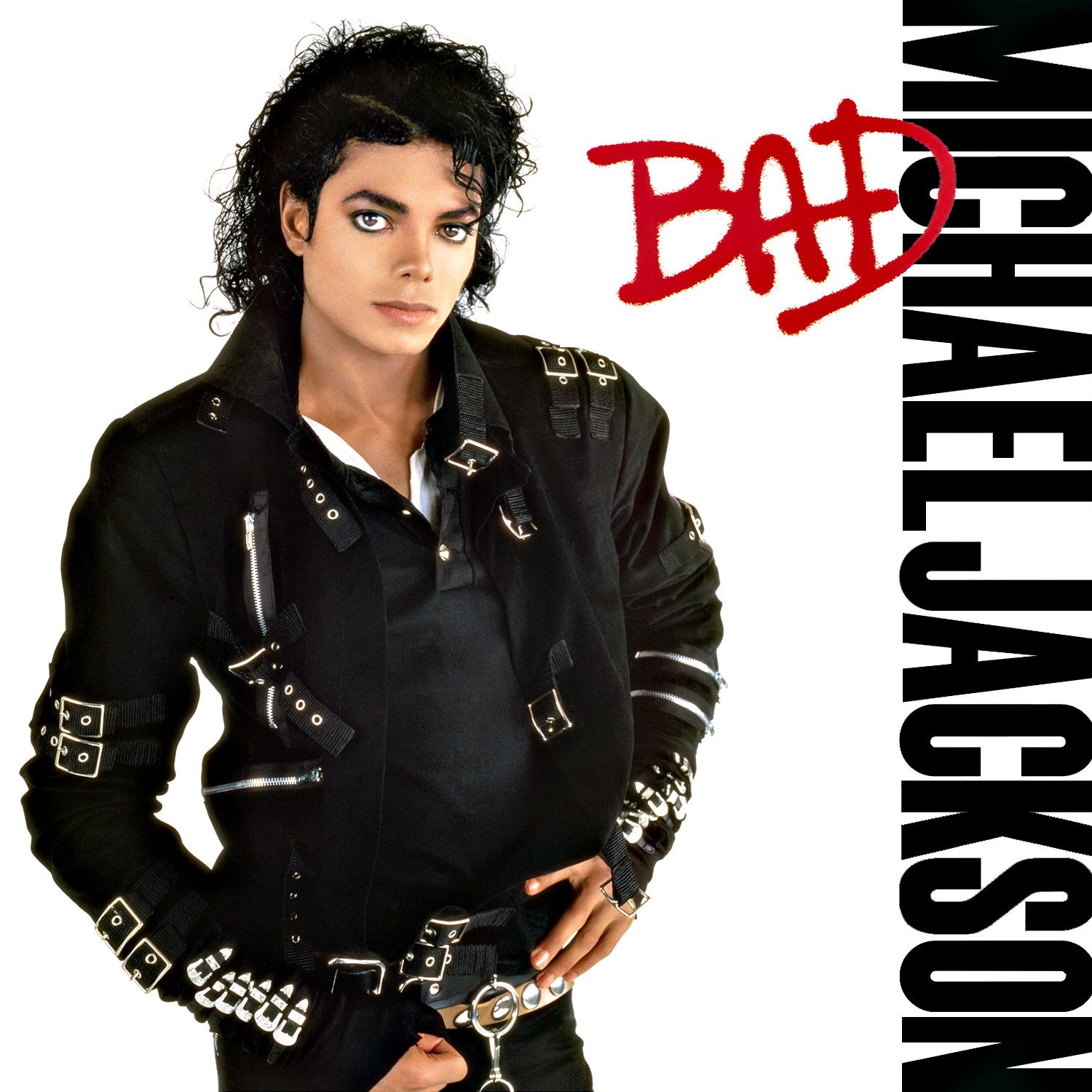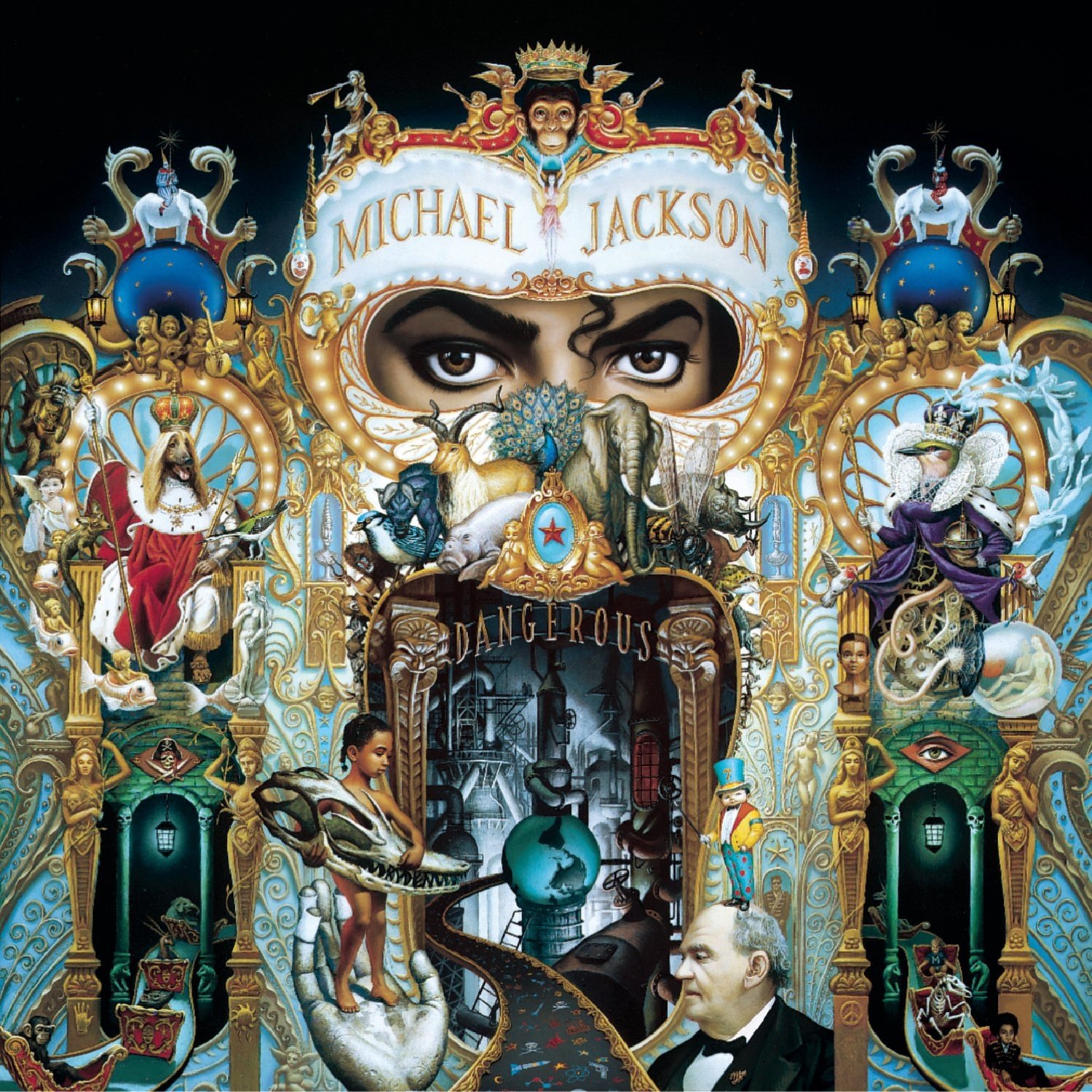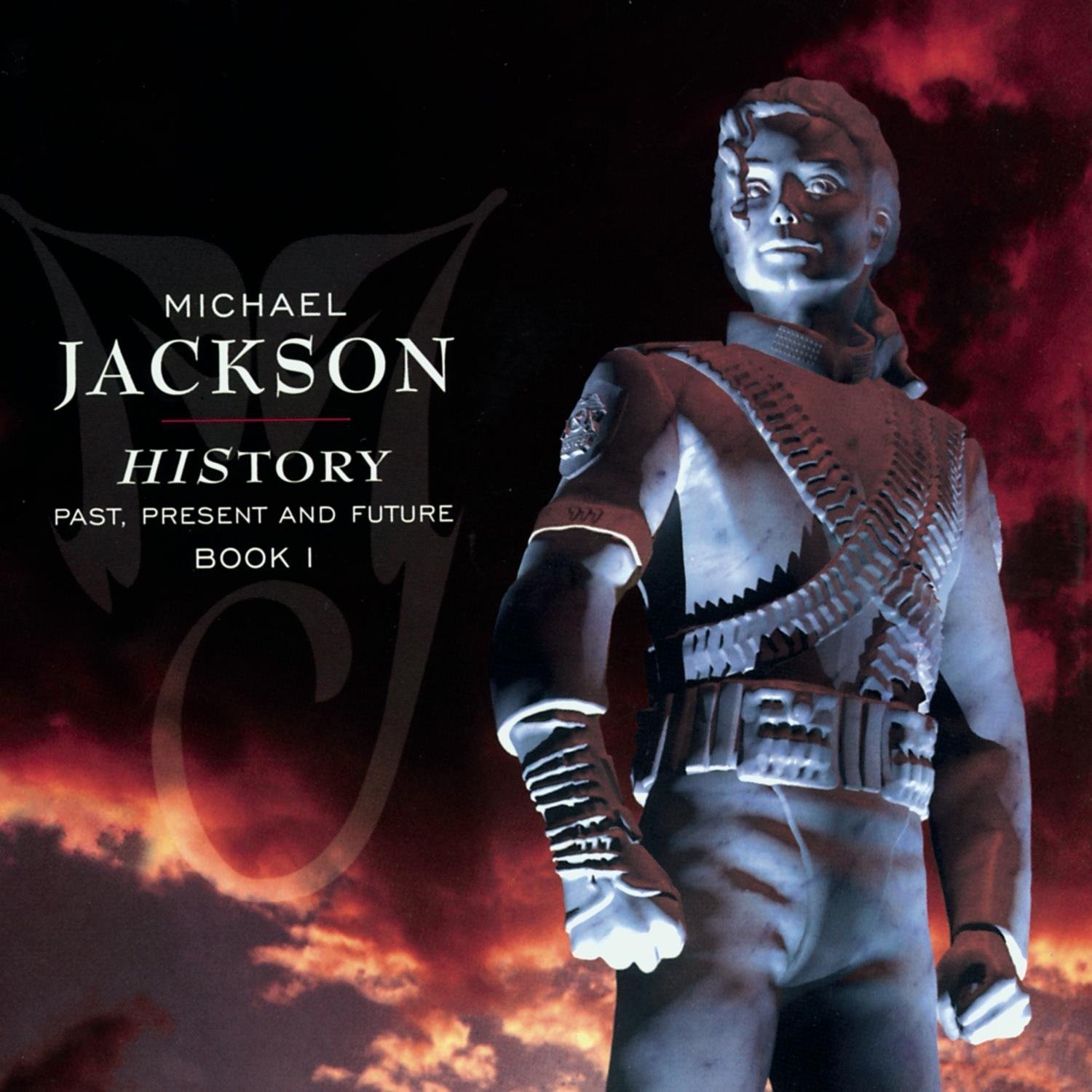Happy 40th Anniversary to Michael Jackson’s sixth studio album Thriller, originally released November 30, 1982.
Thriller. Just the mere mention of the album throws up a string of iconic images and record shattering statistics. It is the biggest selling album of all time. It spent a record-breaking 37 weeks at #1 (including two 17-week consecutive runs.) It was the highest selling album of the year for two consecutive years in 1983 and 1984. It was the first album to spawn 7 Top Ten singles. It helped Michael Jackson set a record GRAMMY Award haul for one night with eight trophies. Its videos reshaped what promo clips could be and broke down the racial lines of the burgeoning MTV. It brings to mind images of lit-up pavements, zipper jackets, dancing zombies, glittering socks, sequined single gloves, and moonwalks. It became the blueprint for every album that followed. It outsold the collective sales of the remainder of the Top 10 albums of all time. As Quincy Jones infamously said, it “saved the record industry.” It catapulted a superstar into the rarefied air of the stratosphere.
But before all that. Before all the awards and the accolades. There was simply Thriller, the follow-up to Jackson’s landmark Off The Wall (1979) album. Jackson, no longer just considered the twirling Wunderkind of The Jackson 5, had proven himself as a vibrant and viable solo artist with his disco-defying breakout.
With Thriller, Jackson wanted to continue to push his creativity. He was intent on creating an album that wouldn’t be restricted by racially drawn classification of genre or radio play. He wanted to create an album where every track was a hit—an album of all Thriller no filler, if you will.
Jackson reconvened with producer Quincy Jones and engineer Bruce Swedien in Westlake Studios on April 14, 1982 to start on the road towards Thriller. The first track recorded, and ultimately the album’s first single, was the famed duet between Paul McCartney and Jackson, “The Girl Is Mine,” a sweet-enough MOR song that while charming, didn’t allude to the juggernaut that was to follow.
After an extended break, Jackson and crew returned to the studio later in the year and resumed work on the new album. Sessions that would last until November 8th and would see the team whittle down a collection of thirty songs (since inflated to numbers in the hundreds by Jones) to the final nine that would make up the final album.
When Thriller debuted on November 30, 1982, the echoes of Off The Wall and the more current Jacksons album Triumph (1980) filled the expectations of the album buyer. With “The Girl Is Mine” nestled in the Top 10, many wondered if it was indicative of a new direction Jackson was taking. One thing was certain—this wasn’t the “Don’t Stop Til You Get Enough Part II” many were expecting. Looking back, “The Girl Is Mine” might have been the sacrificial first single to get the big duet on the air and out of the way, making space for what was to come.
WATCH the Official Videos (Playlist):
So as the needle dropped on Thriller, a rapid-fire triplet of hits ushered in a new era for Jackson. Any fears as to whether he was abandoning the funk were soon forgotten as the driving beat and hypnotic bass line of “Wanna Be Startin’ Somethin’” filled the air.
Charged with energy, there’s an urgency present, as if Jackson can’t wait for Thriller to be heard. With each passing verse of “Startin’ Somethin’,” we are introduced to more instrumental embellishment as horns puncture lines, synths swirl, and percussive claps hit. They combine in a way that elevates the track to a higher plane as each new chorus approaches. Jackson sings of a world hungry for idle gossip that feasts on rumor and innuendo (while even sparing a verse to square off with teen pregnancy). Of interest the first time you ever heard it was the namedropping of “Billie Jean” in a lyrical cameo that would come to fruition in several songs’ time.
Jackson’s vocals are biting, intense and even taunting in a middle eight as he teases, “You’re a vegetable / They eat off of you.” Rounding out this epic opener, Jackson flips the script from paranoia and persecution to one of hope and empowerment as the song builds to its apex with a (now often sampled) chant that elevates the song to a new place, making it one of the strongest album openers in the history of music.
As he had done with Off The Wall, Jackson supplements his own creations with songs sourced from external writers including Rod Temperton. Temperton ended up contributing three songs including the funk-soul groove of “Baby Be Mine” that finds Jackson in a more carefree space vocally than elsewhere on the album. The production and specifically Jackson’s vocals elevate the song from being purely filler as one expects it would be on a lesser artist’s album. Coupled with “The Girl Is Mine” in the sequencing, the momentum gained from “Wanna Be Startin’ Somethin’” slows a little before lifting with side one’s epic closer.
It’s difficult not to conjure up the visuals of the landmark short film as soon as you hear the opening of “Thriller,” but before the iconic imagery was burned into our collective consciousness there was just this catchy, but kooky, track in the middle of an otherwise mature album. Originally written as an optimistic tune called “Starlight,” the lyrical content was changed at the behest of Jackson and Jones who felt the song should have a darker edge to it. Charged with the task, Temperton came back with this ode to schlock horror and Jackson knocked it out of the park.
“Thriller” is at once a novelty and a serious contender for your dancing shoes. Its shuffling groove grabs you like one of the song’s ghouls and doesn’t let go, while Jackson’s vocals contain a sense of dread before exploding with excitement in the killer chorus. As the closer to side one, “Thriller” reignites the excitement that the album kicked off with and had you eagerly awaiting what comes next.
As an Amazon affiliate partner, Albumism earns commissions from qualifying purchases.
From its opening electro-chimes, “Beat It” sounded unlike anything else you had heard from Jackson throughout his career. It was harder. Grittier. Rawer. It was rock. Gone is the softness and sweetness that usually characterized his vocals, replaced by a more defiant and challenging delivery that is razor sharp.
Packed with killer hooks and a strong musical sensibility, “Beat It” draws from the urban world around him as Jackson relays the pressures of a young man needing to prove himself in a street tough environment. Fleshing out this bold expedition into the world of rock came the masterstroke of pairing Jackson’s harder vocals with the rock trickery of Eddie Van Halen. Van Halen’s instantly recognizable licks explode as he works the fret board like a magician and his solo now feels like a natural inclusion rather than the daring pairing of “white” rock with a “black” artist. A pairing that not only broadened the musical landscape, but also decimated segregated radio formats.
If ever there was a quintessential Michael Jackson song it would have to be the sonic masterpiece that is “Billie Jean.” The crispness on the opening beat is something to marvel at. Just a simple one step beat, but the way it hits has such energy and propulsion it is almost irresistible. And then the bass kicks in. A mix of strut and stalk, the bass walks its way through the track and it is so fat in its sonic value it literally hums through the speakers. For most songs, those two elements alone would be enough to make it an instant classic, but musically Jackson brings so many little hooks to the track that it transcends it from being one of the best songs he ever recorded to being one of the best songs ever recorded by anyone, period.
From the percussive lyrical delivery to the rich harmonies to the countering backing vocals to the myriad of tantalizing musical flourishes, “Billie Jean” is as close to musical perfection as you are ever likely to come across. There is something in every phrase, every note to catch the ear and keep it entertained.
It also fleshes out what would become a familiar, and somewhat telling, lyrical motif casting Jackson’s interactions with women in a femme-fatale trope. Who knew questioning paternity could be so catchy? But that is one of Jackson’s lyrical talents. To have you singing a song so catchy in its rhymes and delivery that it’s not until much later that you end up investigating the meaning behind it all.
Together with “Beat It” and “Wanna Be Startin’ Somethin’,” “Billie Jean” shows a growing maturity in Jackson’s songwriting both musically and lyrically and sees his voice forming into the signature delivery he would be known for (and which was often mimicked).
It’s easy to forget the power of Thriller when the majority of the songs have become standard listening through the ages. But revisiting the hauntingly, seductive and intimate “Human Nature” constantly reveals its beauty. With the dreamlike introduction of trickling synths and seductive guitar, the heart of “Human Nature” lays in the mystery of the lyrics and the sweet floating vocal delivery Jackson brings.
Penned by Toto alum Steve Porcaro and lyricist John Bettis, “Human Nature” has an airy melodic quality that cushions Jackson’s vocals as they float and swirl before taking flight with those oh-so-perfect (and unscripted) extended exclamations of “Why?”
It seems counter-intuitive that a song so heavily based in electronic instrumentation with sweeping and bubbling synth runs resonates with such a rich organic warmth. This feat is thanks mostly to Jackson’s vocal delivery (especially in the often missed backing vocals) that keeps the track still feeling fresh and current, and the intoxicating melody that feels as though it has been plucked from the future.
Enjoying this article? Click/tap on the album covers to explore more about Michael Jackson:
With a spring in its step, “P.Y.T” is the designated infectious party jam. There is a sweetness embedded into the track that has kept it from aging, and while not overly complex musically, nor vocally challenging, it has the ability to improve moods and place a smile on the face of any listener. A moment of fun dance-pop that isn’t meant to change the world, but will undoubtedly shuffle your feet.
Dripping with old school soul, “The Lady in My Life” is another slice of perfect production. Seductive and smooth, the song slowly builds with Jackson’s sublimely pure vocals and enticing melodies, and delivers dual peaks in the shape of the amazing bridge and the extended breakdown just past the mid-point of the song. Originally recorded with extra verses, timing constraints on vinyl forced the song to be trimmed back. Thankfully, the verses were sacrificed to save the more-than-two minutes of Jackson’s ad-libs in the extended outro that showcases his brilliance as a vocalist.
Oh, and what became of the castoffs of Thriller? Those other tracks that vied for position. To mark the 40th anniversary of Thriller, a deluxe edition has been released that features ten tracks that didn’t it to the final pressing. Songs like the dreamy “Carousel” or the funk driven futuristic blending of Yellow Magic Orchestra and Jackson on “Behind The Mask” or the dance workouts of “Sunset Driver” and “Got The Hots,” which show the orbit Jackson was spinning in. They’re also indicative of Jackson’s unrelenting pursuit for pop perfection. Where many of the songs would have made the final cut (and indeed did for other artists’ albums), Jackson wanted more. And he was rewarded tenfold for his creative tenacity.
When you’ve heard the songs off Thriller so many times as standalone tracks, it’s easy to forget how brilliant they work as a collective. The production is second to none and Jackson is in his prime vocally, as he gives each track life in a way that is captivating and enchanting.
Whether it set out to be the album for everyone or not, Thriller ended up being that way. So powerful and popular it obliterated the color lines of radio airplay and placed music, not race, at the center of playlists and turntables the world over. And 40 years later, the rewards of spinning this masterpiece continue to be there.
LISTEN:
Editor's note: this anniversary tribute was originally published in 2017 and has since been edited for accuracy and timeliness.






